The Liebig Trade Cards: The Opera Series May 04 2021
The collectible cards of the Liebig Meat Extract Company were not only extremely popular when they were first released in 1872, but remain so to this day even over a hundred years later, In a time before commercial travel and mass information, they provided an eye-opening window to the wider world. Liebig Meat Extract trading cards were made for over a century later in 1975.
So what is the background behind these treasured cards, and why are they so unique?
SCROLL DOWN TO SEE THIS BEAUTIFUL SET COLLECTION!
The Liebig Meat Extract Company
The origin of these highly collectible trading cards comes from unexpected beginnings: the business of selling concentrated meat stock. The method behind this meat extraction came from the German chemist Justus von Liebig. Liebig made the process public, wanting to share his invention with the world so even those who could not afford actual meat might at least still have the taste of it in their soups and stews.
What are Liebig Meat Extract Trade Cards?
Liebig’s trading cards began life as part of a marketing campaign for Liebig’s meat extract. Colorful and detailed illustrations of opera characters, exotic animals and historical architecture were lithographically printed on coated card by hand in vibrant technicolor, representing the finest examples of the Victorian master-printer’s art.
Whilst they were an advertising tool, Liebig’s trade cards essentially became educational tools covering almost every field of knowledge. Before the mass-information age, these cards were seen as more than just a marketing gimmick, instead like an encyclopedia with the range of topics covered and information in the sets. The cards eventually became more popular than the meat extract they were trying to sell.
How many Liebig Meat Extract Trading Cards were made and where?
An estimated 1,500 sets were published with a total of 11,000 cards printed. The cards themselves mostly came in sets of 6, but also 12, and, having been issued in many countries can be found in several different languages. Cards were always released in the same exact size of 4.1" x 2.8".
What topics can you find with Liebig Meat Extract Trade Cards?
They covered a diverse range of subjects, from “Life in the Sahara”, “Female Fashions”, to the "Life of Coral”, “Banquets through the Ages”, and “Famous Chemists” (naturally depicting Liebig himself of course!).
Tamino Autographs has a nice collection of over forty-five complete sets, all are within the realm of opera and classical composers, an incredibly popular category amongst the Victorians, and a great example of the creative spirit behind the wonderful universe of the Liebig Meat Extract trading cards.
Why are Liebig’s Trading Cards so collectable?
Liebig’s Meat Extract cards represent tremendous value to collectors the world over because of their historical significance, intricately illustrated images, and limited supply. For many collectors the cards are priceless, with few willing to sell. Some sets are worth a great deal of money, but for many the attraction is not necessarily in dollar value but their place in history.
How much are Liebig’s Trading Cards worth?
Liebig’s trading cards can be priced anywhere from USD 40 to over USD 300. A cards’ condition will be a factor, but the main element is the publication date with the earliest editions most expensive. For example, a set of 6 cards showing different ancient architectural styles, and printed in 1950 can be found online selling for $40; another set of 6 entitled “L’Antarctique” published in 1900 is being sold for $140; and a set of 6 cards showing exotic animals and published in 1886 is priced at over $300.
Where can more information on Liebig’s Trading Cards be found?
Full catalogs can be found online. There are also numerous articles that tell you more about these wonderful pieces, especially on museum and university sites such as London’s Victoria and Albert Museum, and Princeton University
Of the nearly 1500 sets released in total, over 40 are directly or indirectly related to opera and opera composers. Opera sets tell the libretto of the opera in 6 images, while the composers and opera characters sets depict the composer lives and the heroes and heroines in famous operas.
We prepared this report for your appreciation, enjoy!
A Summer Night Dream by Ambroise Thomas, published 1893

Aida by Giuseppe Verdi, published 1891

Asrael by Alberto Franchetti, published 1891

Boris Godunov by Modest Mussorgsky, published 1927

Carmen by Georges Bizet, published 1895

La Damnation de Faust by Hector Berlioz, published 1911

Der Freischutz by Carl Maria von Weber, published 1901

Der Rosenkavalier by Richard Strauss, published 1935

Der Trompeter von Sakkingen by Viktor Nessler, published 1893

Die Meistersinger von Nürnberg by Richard Wagner, published 1910

Die Walküre by Richard Wagner, published 1893

Die Zauberflöte by W.A. Mozart, published 1909
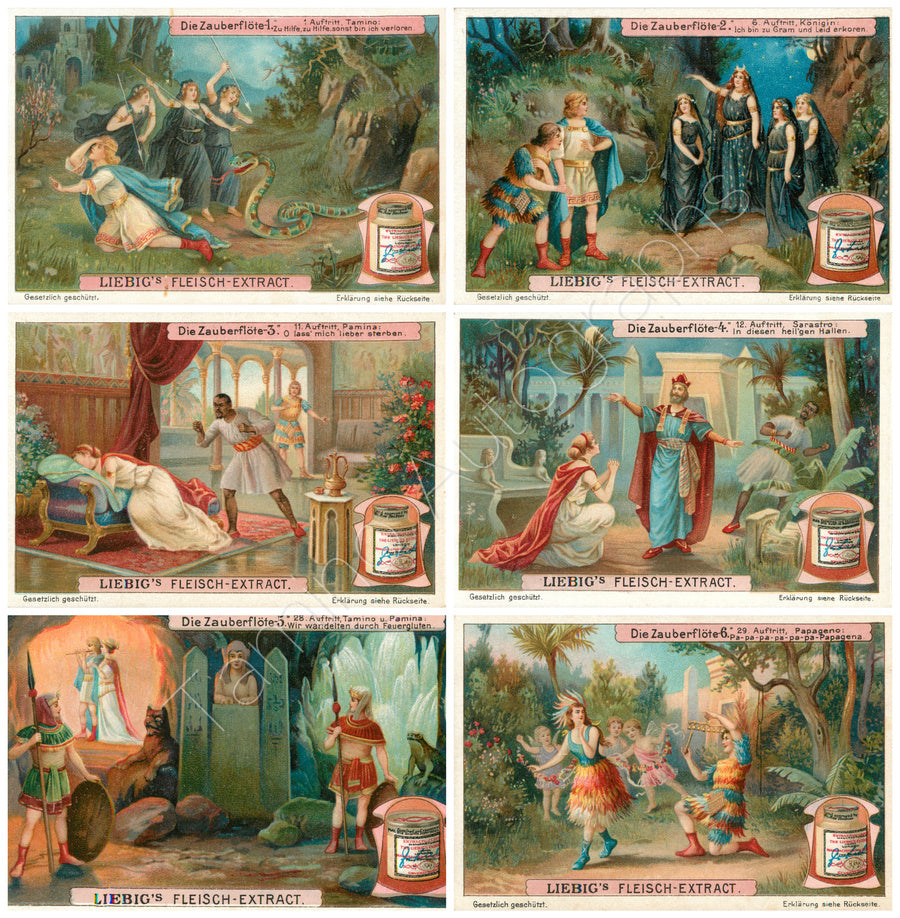
Don Giovanni by W.A. Mozart, published 1907
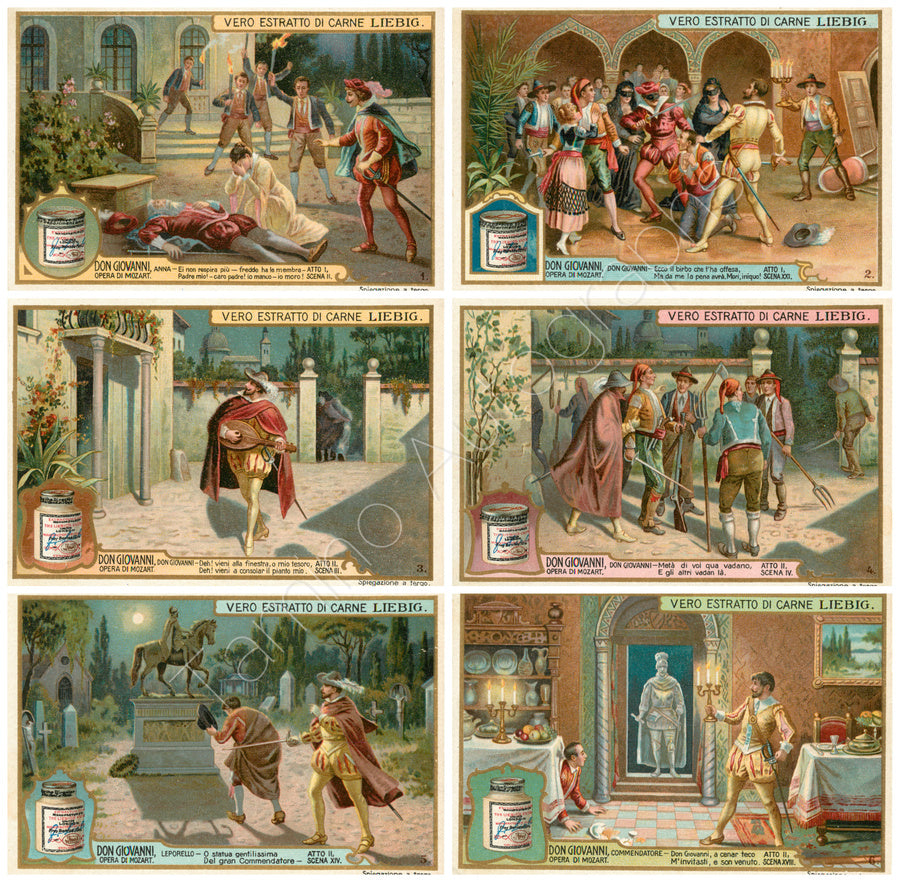
Faust by Charles Gounod, published 1892

Female Heroes from Wagner Operas, published 1903

Female Opera Characters, published 1892


Fidelio by Ludwig van Beethoven, published 1901

Guillaume Tell by Gioachino Rossini, published 1938

Hamlet by Ambroise Thomas, published 1900

Il Piccolo Marat by Pietro Mascagni, published 1924

Il Trovatore by Giuseppe Verdi, published 1905
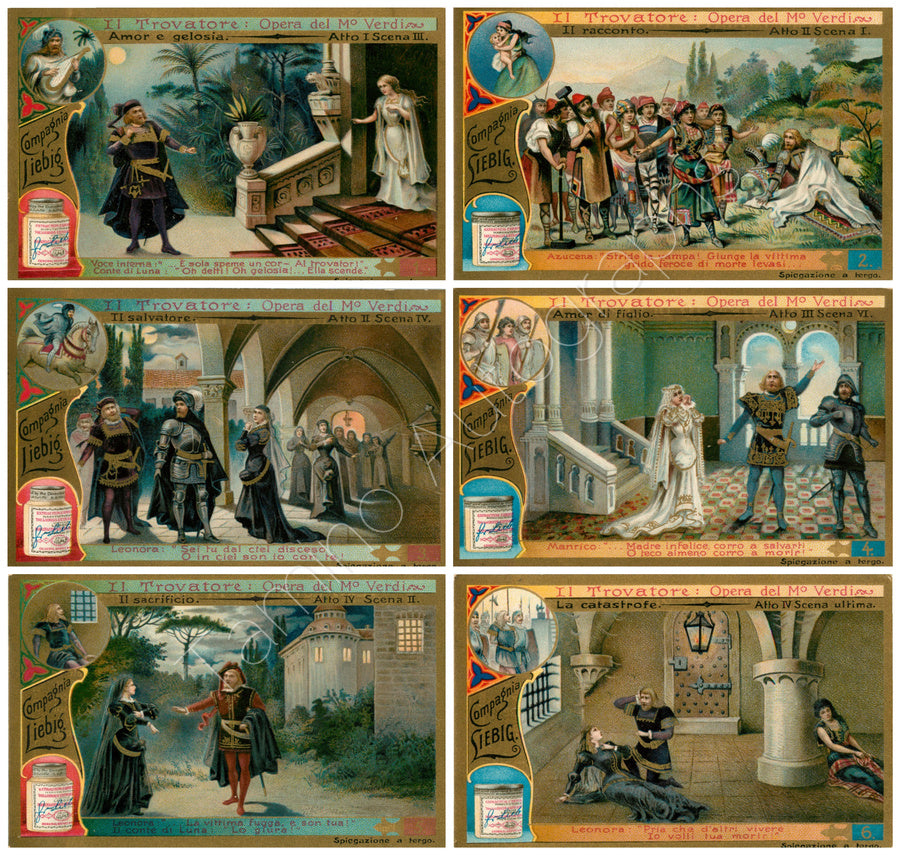
Johann Strauss Operas, published 1901

L'Africaine by Giacomo Meyerbeer, published 1896

La Traviata by Giuseppe Verdi, published 1909

Le Cid by Jules Massenet, published 1911

Le Nozze di Figaro by W.A. Mozart, published 1905

Le Prophéte by Jules Massenet, published 1897

Les Huguenots by Giacomo Meyerbeer, published 1890

Lohengrin by Richard Wagner, published 1893
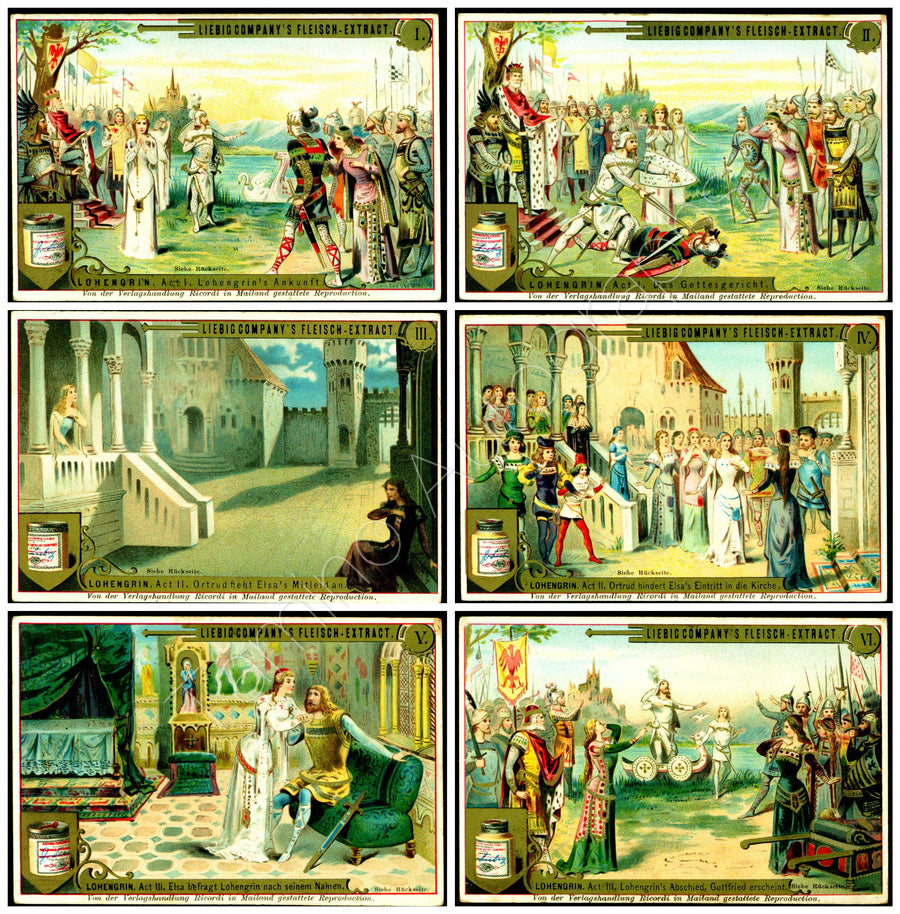
Male Opera Characters, published 1893


Mignon by Ambroise Thomas, published 1908

Oberon by Carl Maria von Weber, published 1905

Opera Caricatures, published 1894

Opera Menu Cards, published 1897

Opera Scenes, published 1893

Opera Theaters of the World, published 1924
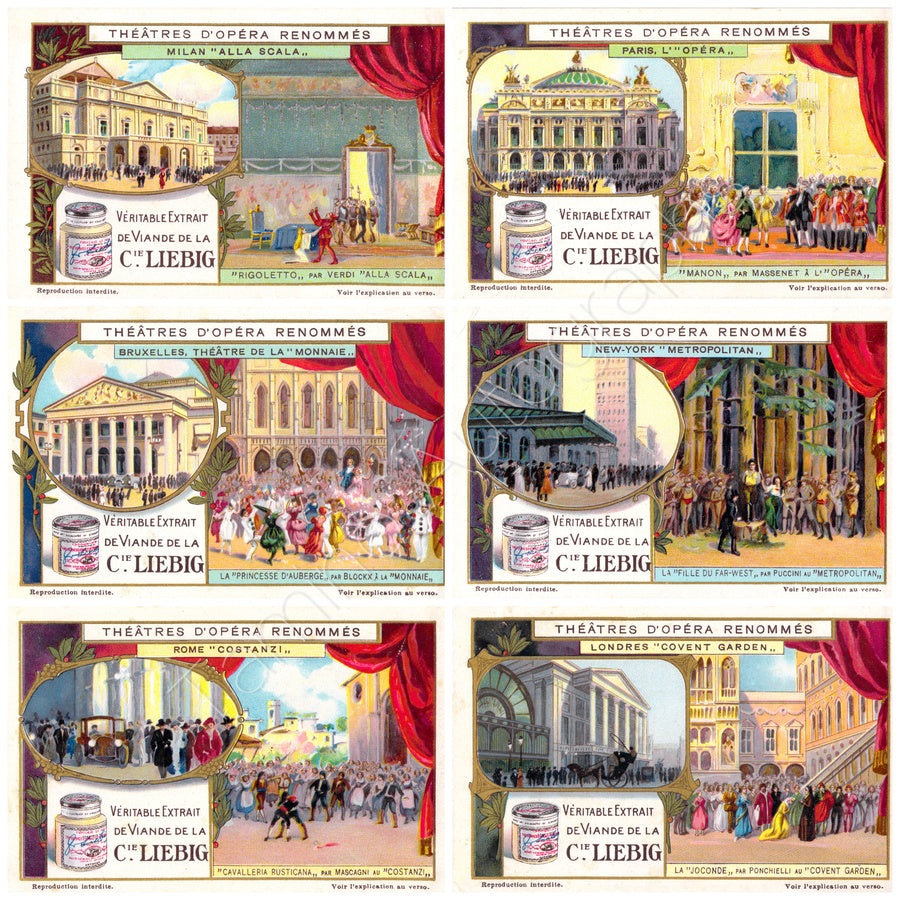
Operas and Composers, published 1905

Otello by Giuseppe Verdi, published 1888

Parsifal by Richard Wagner, published 1904

Robert Le Diable by Hector Berlioz, published 1909

Samson et Dalila by Camille Saint-Säens, published 1906

Tannhäuser by Richard Wagner, published 1896

Turandot by Giacomo Puccini, published 1939

Un Ballo in Maschera by Giuseppe Verdi, published 1952

Verdi and his Operas, published 1913

SEE ALSO:
- Vintage Composer Toy Music Boxes by ANRI Toriart, Italy
Interested in authentic autographs?
